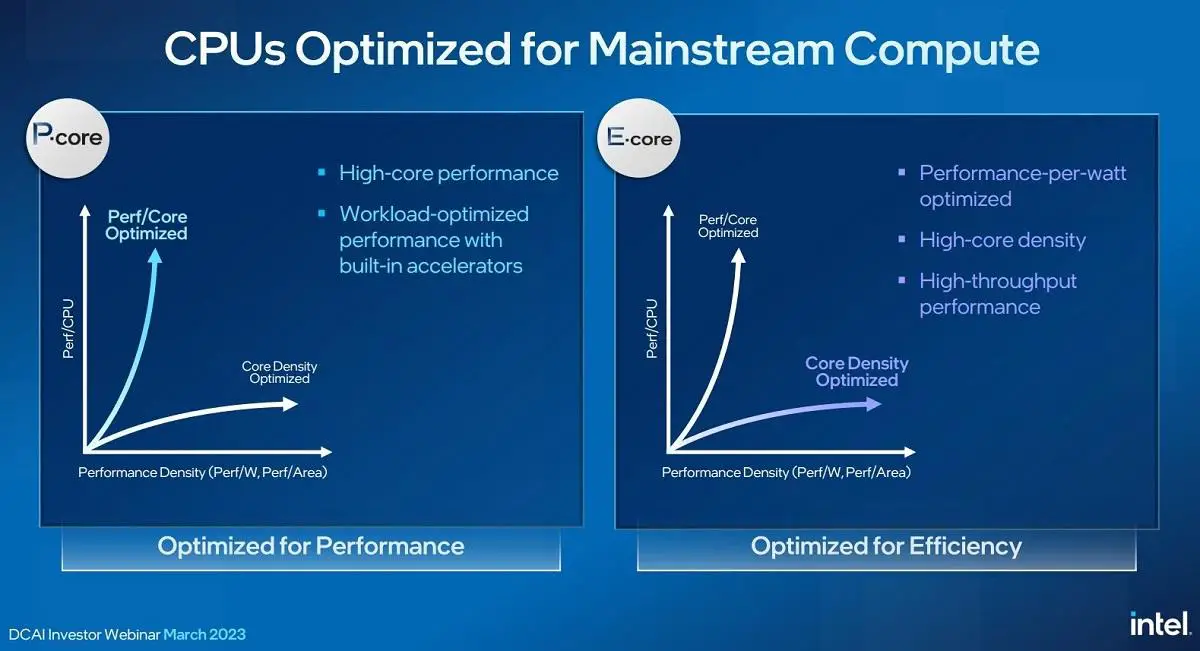Intel releases 2023-2025 Xeon processor roadmap
Since 2017, AMD has steadily gained market share in the server processor sector with its EPYC processors. Concurrently, various Arm-based processors have emerged, and while Intel maintains its leading position, its market share has steadily declined. For many investors, Intel’s data center business is of paramount concern.

Intel has recently unveiled its Xeon processor roadmap for 2023-2025, focusing on its data center and artificial intelligence divisions. The company also provided extensive updates on its market forecasts, hardware plans, and software licensing for developers.

According to Intel, future Xeon processors will be divided into P-Core and E-Core product lines. The former represents the traditional Xeon series, while the latter introduces an energy-efficient architecture, offering improved power efficiency, with the first product being the previously announced Sierra Forest. This bifurcation caters to the diverse needs of different customers.

Emerald Rapids will succeed the fourth-generation Xeon Scalable processors, Sapphire Rapids. Currently in the sampling stage and undergoing mass validation, it is expected to be delivered on schedule in the fourth quarter of this year. Utilizing the Eagle Stream platform, it maintains compatibility with Sapphire Rapids, sharing the LGA-4677 socket for seamless customer upgrades.
Employing the 10nm Enhanced SuperFin process, or Intel 7, Emerald Rapids adopts the Raptor Cove architecture core, an optimized version of Golden Cove. It is expected to achieve a 5-10% IPC increase, with up to 64 cores and 128 threads. The base frequency is raised to 2.6 GHz, accompanied by 320MB of L3 cache and 128MB of L2 cache. It supports up to 4TB of DDR5-5600 memory and has a TDP of 375W.

The transformative Granite Rapids is slated for a 2024 release, closely following Sierra Forest. Manufactured using the Intel 3 process, it features Redwood Cove architecture cores, with an increased core and thread count—projected to reach 120 cores and 240 threads. Its L3 cache is 240MB. Reports suggest that Granite Rapids has a base frequency of 2.5 GHz, offering 128 PCIe 6.0 lanes and 12-channel DDR5 memory. Intel has revealed that Granite Rapids will incorporate multiple smaller chips within a single SoC, using EMIB packaging.

Intel plans to launch the Sierra Forest in the first half of 2024. This entirely E-Core product comprises 144 cores and is manufactured using the Intel 3 process. It employs the LGA-7529 socket. Compared to AMD’s Bergamo, which features a maximum of 128 Zen4c architecture cores, Sierra Forest boasts an advantage in core count. Optimized for edge cloud workloads, it has already been sampled and successfully lit. Sharing a platform, IP, and technology with Granite Rapids allows for maximum development and design time reduction.

Intel briefly introduced the second-generation all-E-Core processor, Clearwater Forest, scheduled for a 2025 release. Manufactured using the Intel 18A process, it will feature even more cores. The Intel 18A process introduces two groundbreaking technologies: RibbonFET and PowerVia. RibbonFET is an implementation of the Gate All Around transistor, marking Intel’s first entirely new transistor architecture since the introduction of FinFET in 2011. It accelerates transistor switching speeds while achieving the same drive current as multi-fin structures, but with a smaller footprint. PowerVia, exclusive to Intel, is the industry’s first backside power delivery network, optimizing signal transmission by eliminating the need for front-side power delivery wiring on the wafer.





